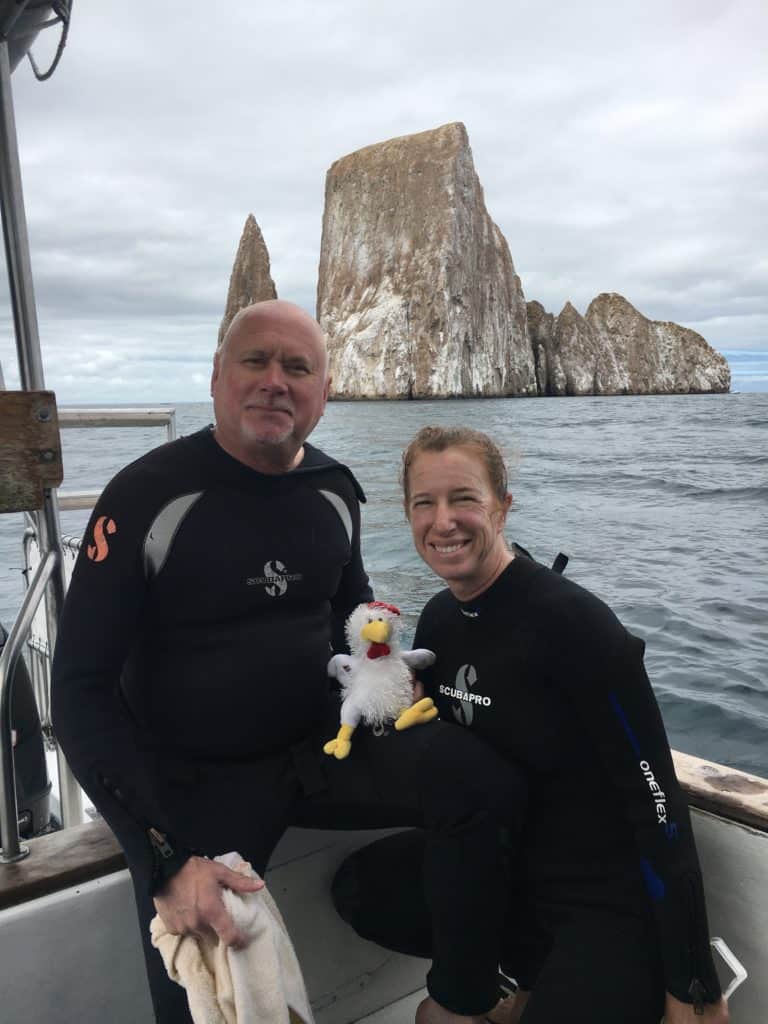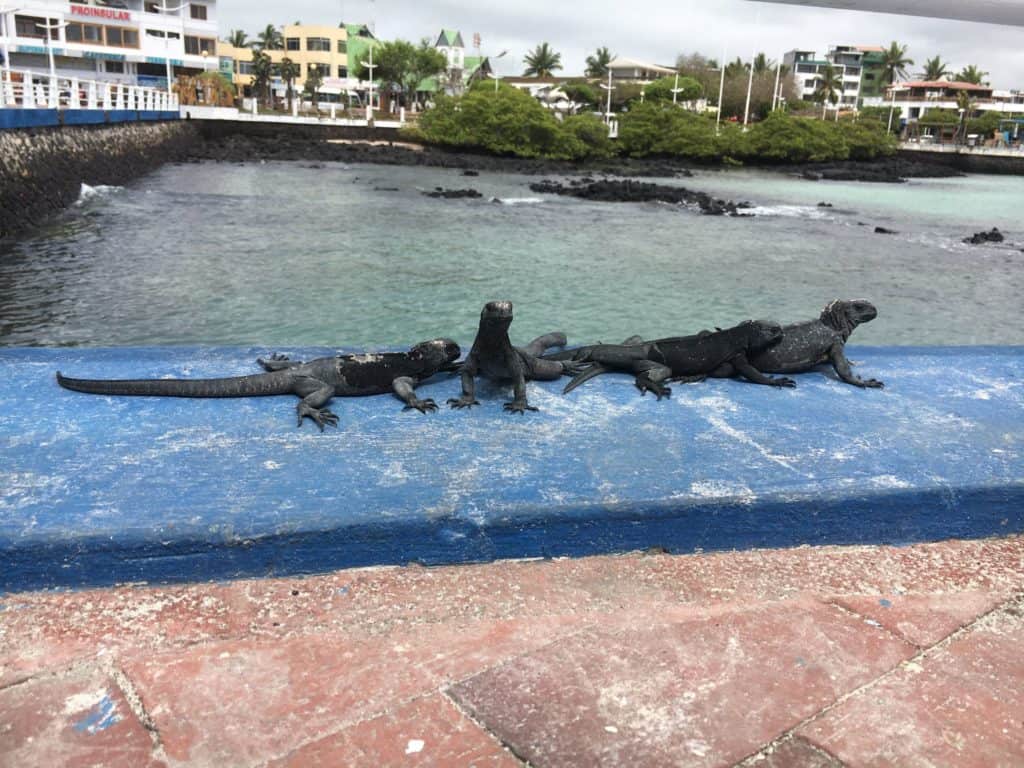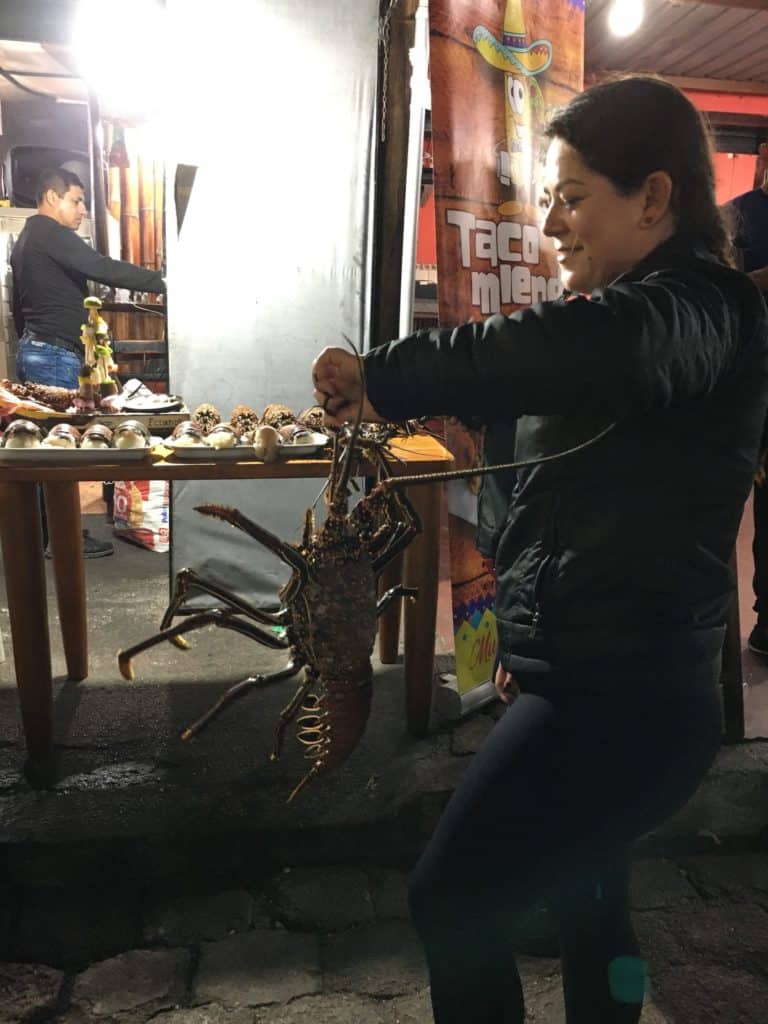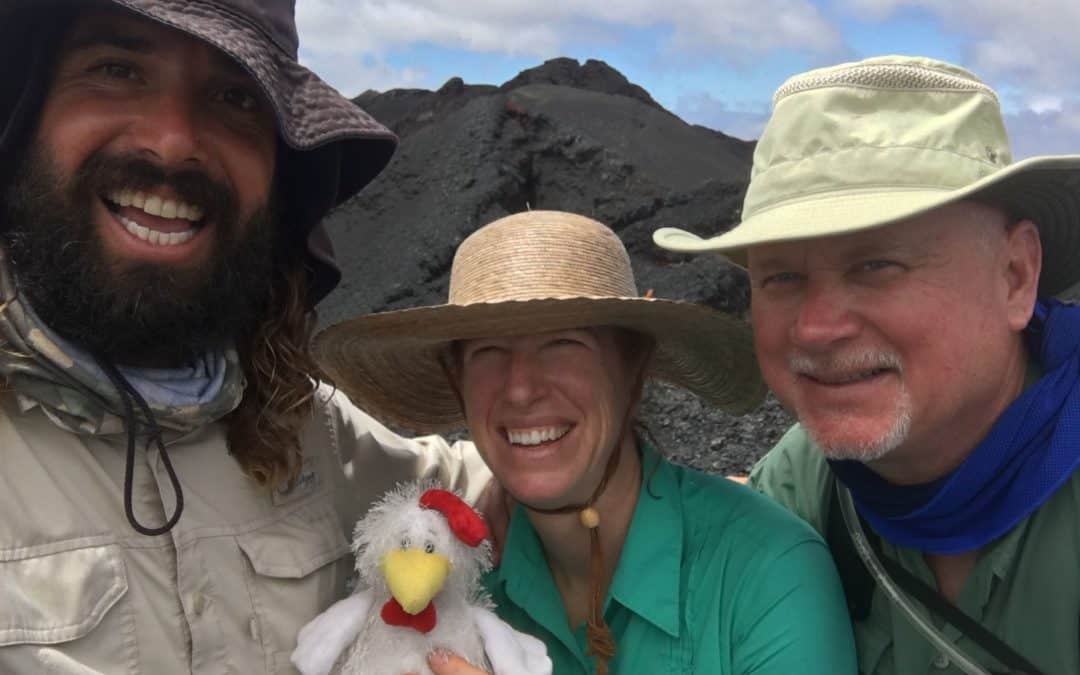Three lessons for making the most of your visit
For many people, visiting the Galapagos is a once-in-a-lifetime experience. As I was getting ready for my trip to the famous islands in the Pacific, almost everyone I talked to said going there is on their “bucket list.” So how can you make the most of this iconic trip?
I figured, who would know better than the Guides who have been showing people around the islands for years?
Guides are ubiquitous in the Galapagos. Not only are you required to have a guide to visit spaces and sites that are within the Galapagos National Park – which covers 97% of the land and water in the archipelago. Guides also provide invaluable insights on the unusual flora and fauna that have made the islands famous. They complete a multi-month training program and play a key role in the appreciation and conservation of the islands.
During our 6-day trip to the Galapagos, booked through Detour Destinations and managed by Neotropic Expeditions, my husband and I were fortunate to have a private guide on each of the 3 islands we visited. Although guides don’t have to be from the Galapagos, each of ours had been born and raised on the island where they now live.
Besides sharing details about the mating rituals of giant tortoises and how marine iguanas swim, they offered tips for enjoying their home islands.
Be Physically Prepared
For more than a decade, our guide on Isabela, Sebastian Estrada, has been taking groups around the areas where his swashbuckling pirate ancestors landed centuries ago. He often leads groups from well-known companies that offer active trips around the world.
Over the years Sebastian has come to expect that there will be at least one or two people in a group who are less prepared than the rest. Although he adjusts what the group does to accommodate all levels, sometimes the other guests get frustrated because they expected a different experience.
It’s better to tell the guide up front if you have any concerns or limitations on activities, so the guide can plan for it before setting out, Sebastian says. Before we hiked along the Sierra Negra volcano crater, my husband mentioned that he doesn’t like getting near the edges of rocks or cliffs with drop-offs. Sebastian pointed him to spots along the hike where he’d get a great view without being too close to the edge.
Sebastian also told us to watch out for uneven surfaces – in nature, around town and even in hotels. Stairs and curbs don’t have “standard” heights there, and iguanas and sea lions lounge across sidewalks and streets at will. He’s had guests trip and fall, then not be able to do the activities they’d planned.
Pack a variety of clothing
Bring clothes for a variety of weather conditions, which can vary more than you might expect, and change quickly. Of course, all the photos you see online show sunny days and people snorkeling in bathing suits. We were glad we had rain jackets handy and used them several times.
For more tips on clothing and other gear, check out my post on Packing for Your First Multi-sport Adventure Trip.
My husband and I took the advice of Maria Fernanda Gordillo, our guide on San Cristobal, and rented full-length wetsuits for snorkeling at Kicker Rock. We were comfortable snorkeling for the full time during our two 45-minute excursions alongside sea turtles and countless fish. Others on our boat who had “shortie” wetsuits either cut their snorkeling time short, or shivered as we swam around the massive rock formation looking for sharks (saw one black-tipped, no hammerheads though).

One thing I didn’t think to bring was a Buff. Sebastian and many of the locals we saw wore neck and head protective sleeves, and pulled them up to cover most of their faces. The sun is incredibly strong on these islands that lie along the equator. Many shops in Puerto Ayora on Santa Cruz had cute versions of Buffs with marine and bird patterns, but by the time we got there it was our last day in the Galapagos.
Be flexible
Tourism in the Galapagos is more steeped in nature than many other destinations, Maria pointed out to us. Birds, iguanas, sea lions and other wildlife come and go as they please without barriers, enclosures or specific viewing areas (with a few exceptions – like the Tortoise Center on Isabela island and the Charles Darwin Research Center on Santa Cruz island).

One night as we sat at dinner we noticed a sea lion sprawled across the boardwalk that lead to the restaurant. Galapagos rules include that you must stay 6 feet from the wildlife. So when people approached the restaurant via the boardwalk, they had to turn around and take the long way!
Although you almost can’t avoid seeing the most iconic animals of the Galapagos – sea lions, marine iguanas, blue-footed boobies, giant tortoises – others can be more elusive. When we kayaked to an area where dozens of endemic Galapagos penguins usually hang out, we only saw one. But at least we saw one!
Even seemingly “common” items can be hard to find. My husband ran out of shaving cream on day 3, so we stopped in a few places to find a can. No luck at the supermercado or a few mini-tiendas that seemed to specialize in personal grooming supplies. When we mentioned it to Sebastian, he took us to the place he knew usually stocked “unusual” items. Sure enough, we found it there – for $7 a can.
Sebastian pointed out that the supply ship that brings everything not grown on the islands only comes to Isabela twice a month. A far cry from Amazon 2-day delivery. Plan accordingly.
Slow down
As tempting as it may seem to visit as many islands and sites as you can in as few days as possible – the per-day cost of a Galapagos trip can be pretty steep – spend as much time as you can. In retrospect, I wish we had taken a day or two more than our 6-day/5-night excursion.
Be sure to build in a day or two (or at least a half day) to just relax while in the Galapagos, says Karla Zarabia, our guide on Santa Cruz. She has lead trips that are 5 days and cover 4 islands, which can be too much for some travelers. Some people end up skipping a day or two of activities because they’re too tired. When you only have 5 days, missing 1 is 20% of the time!
Although many people visit the Galapagos via boat, which allows them to move between islands overnight and reach more destinations, we chose a land-based trip, which included at least one night on each island.
Staying on the island allowed us to take Sebasian out to dinner at a local restaurant where his friend’s wife is the chef (check out El Cafetal when you’re in Puerto Villamil). We shared ceviche with Ecuadorans Carmita and Marcelo at the Los Kioskos street food market in Puerto Ayora. And then there was my “guest bartending” stint at the place on Isabela whose bartender had just quit, and the manager didn’t know how to make a lemon drop …

The pace of your activities can make a difference in what you see too. Sea kayaking and stand-up paddle boards (SUPs) are a great way to explore the marine environment up-close and at eye level, Maria noted. As we quietly paddled up to a rocky outcropping in Darwin Bay of San Cristobal, we could clearly see the blue feet of the classic Galapagos blue-footed boobies perched up above us. No binoculars necessary.
So take your time, be flexible and be prepared. And appreciate your guides for all of the wisdom they are so happy and willing to share.

